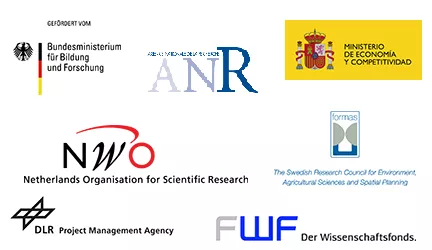ECODEAL
ECODEAL stands for Enhancing biodiversity-based ecosystem services to crops through optimized densities of green infrastructure in agricultural landscapes. Green infrastructure are elements of the landscape, or arrangements of elements in the landscape, that support a diversity of species, including those species that support the pollination of crops and wild plants, and the natural control of pests.
Summary of the project
In ECODEAL we adressed three questions:
- Which dimensions of biodiversity drive flow and stability of pollination & pest control services, and how do they change along gradients of green infrastructure?
- How are pollination, pest control, and the resulting yield benefits, facilitated by the density and quality of green infrastructure at different scales?
- What are the costs and benefits of establishing green infrastructure at different spatial scales, and the implications for the scales at which food production, ecosystem services and biodiversity preservation should be integrated ?
Within the project, we
- analysed existing data to refine our understanding of the links between how we use the land, the diversity and composition of communities of pest and beneficial organisms arthropod, and the ecosystem services
- conducted core landscape-scale fieldwork in Germany, France and the Netherlands, to fill gaps in our knowledge on both the ecological and the economic aspects of these relationships
- developed spatially explicit ecosystem service models that allow us to predict form a map of a region where ecosystem services are weak and where they are strong, and what could be done to improve them
- developed ecological-economic models that we combined with management scenarios to quantify the trade-offs between different services and the economic impacts for the farmers.
A major finding of ECODEAL is that when considering ecosystem services to crops the concept of green infrastructure needs to be broadened to include not only the presence of uncultivated areas in the landscapes, but also small scale mosaics of arable fields, for which suitable indicators are landscape-scale field size or field edge density. Indeed, small fields/large edge density strongly support biodiversity, pollination and pest control. In landscapes with large fields, farmers can rely less on nature’s services to support agricultural production. This is very significant because as we found in ECODEAL the contribution of pollinators to yield of field crops, and the contribution of natural enemies to the control of pests, can be very important.
We identify several challenges in adapting agricultural landscapes for improved ecosystem services to crops. The economic value of individual ecosystem services is significant in absolute terms, however the size of the effects can vary a lot between regions and varieties. Under current conditions, increases in yield in pollinator-dependent crops, as well as increases in natural enemies are not always economically attractive enough to motivate interventions at the landscape scale that are costly. Agri-environmental measures and ecological focus areas, are not generally seen as an opportunity to support ecosystem services to crops, suggesting information and framing could be much improved.
Funding
This research in ECODEAL is funded through the 2013–2014 biodivERsA and FACCE-JPI joint call for research proposals, with the national funders FORMAS, MINECO, ANR, FWF, PT-DLR, BMBF and NWO.
- biodiversa.org
- faccejpi.com
- formas.se
- mineco.gob.es
- agence-nationale-recherche.fr
- fwf.ac.at
- dlr.de
- bmbf.de
- nwo.nl
ECODEAL Partners
Contact
Yann Clough
Lund University
Centre for Environmental and Climate Science
yann [dot] clough [at] cec [dot] lu [dot] se (yann[dot]clough[at]cec[dot]lu[dot]se)


